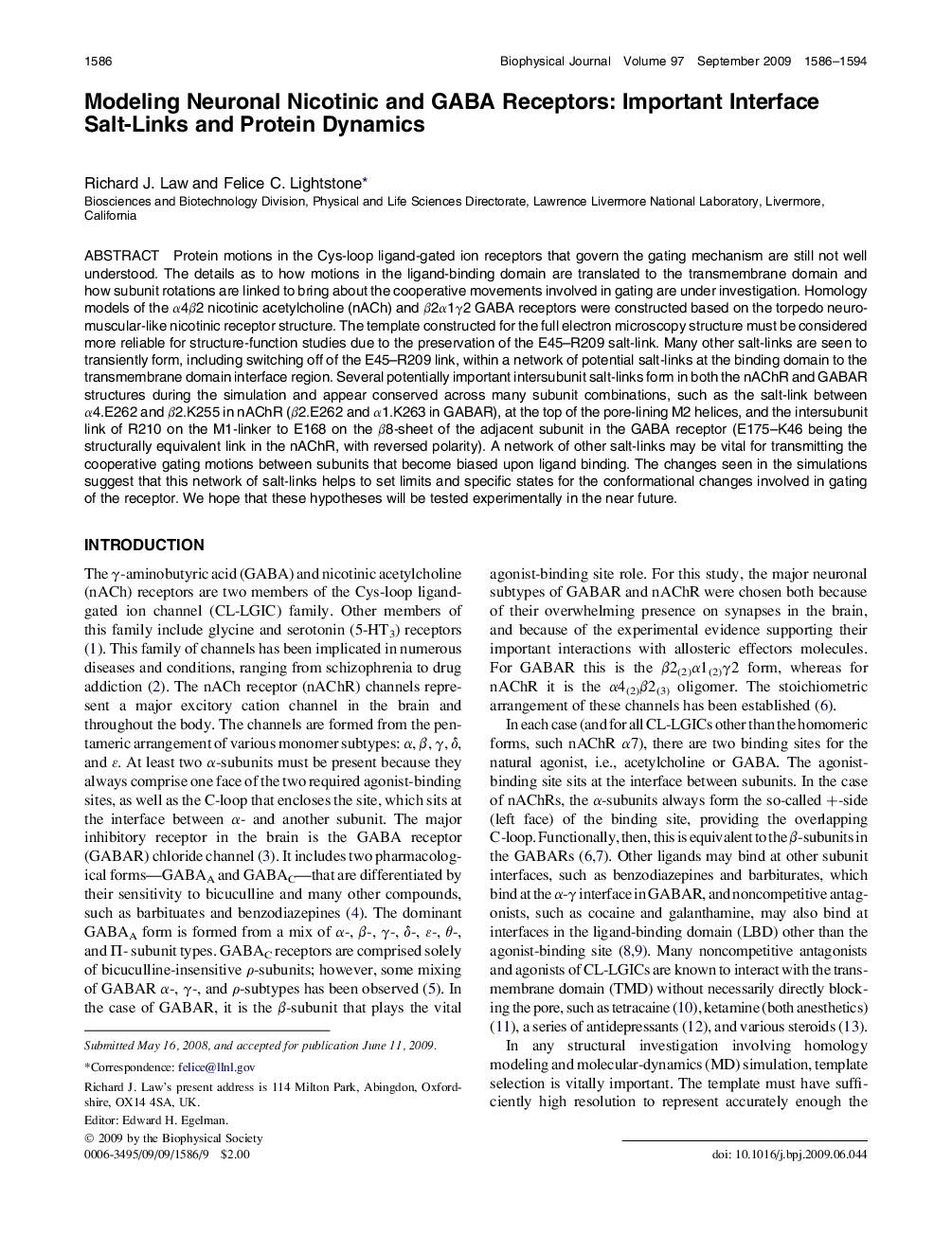| کد مقاله | کد نشریه | سال انتشار | مقاله انگلیسی | نسخه تمام متن |
|---|---|---|---|---|
| 1954941 | 1057807 | 2009 | 9 صفحه PDF | دانلود رایگان |

Protein motions in the Cys-loop ligand-gated ion receptors that govern the gating mechanism are still not well understood. The details as to how motions in the ligand-binding domain are translated to the transmembrane domain and how subunit rotations are linked to bring about the cooperative movements involved in gating are under investigation. Homology models of the α4β2 nicotinic acetylcholine (nACh) and β2α1γ2 GABA receptors were constructed based on the torpedo neuromuscular-like nicotinic receptor structure. The template constructed for the full electron microscopy structure must be considered more reliable for structure-function studies due to the preservation of the E45–R209 salt-link. Many other salt-links are seen to transiently form, including switching off of the E45–R209 link, within a network of potential salt-links at the binding domain to the transmembrane domain interface region. Several potentially important intersubunit salt-links form in both the nAChR and GABAR structures during the simulation and appear conserved across many subunit combinations, such as the salt-link between α4.E262 and β2.K255 in nAChR (β2.E262 and α1.K263 in GABAR), at the top of the pore-lining M2 helices, and the intersubunit link of R210 on the M1-linker to E168 on the β8-sheet of the adjacent subunit in the GABA receptor (E175–K46 being the structurally equivalent link in the nAChR, with reversed polarity). A network of other salt-links may be vital for transmitting the cooperative gating motions between subunits that become biased upon ligand binding. The changes seen in the simulations suggest that this network of salt-links helps to set limits and specific states for the conformational changes involved in gating of the receptor. We hope that these hypotheses will be tested experimentally in the near future.
Journal: - Volume 97, Issue 6, 16 September 2009, Pages 1586–1594